June 19th, at two weeks into the exhibition, here are some collected thoughts with accompanying photos from Phil Gatenby, the curator of this show.

Many thanks to all at the 8th June opening, having a look, taking time, making a memory. On the wall behind: Jo Spence work from the NPG collection courtesy of Richard Saltoun Gallery (image left), Tereza Stehlikova screening ‘Between Jiřina and Anna’ (middle) and New York Times 2013 ‘Art in Review’ feature Jo Spence: ‘Work (Part III) the History Lesson’. The wall out of picture on the right is the next post.

This exhibition, perhaps any and all visual art exhibitions, offer an opportunity to experience stillness. To take a moment for ourselves and give a moment, a time for looking a wee bit longer, in this instance at a commissioned work made by Claire Grey explicitly for this show titled: ‘Grey Ladies’ – a family lineage, a photo-work about then and now.
This is also a moment to reimagine our own families, the quiet ones, the lucky ones and the ones that made a fuss.
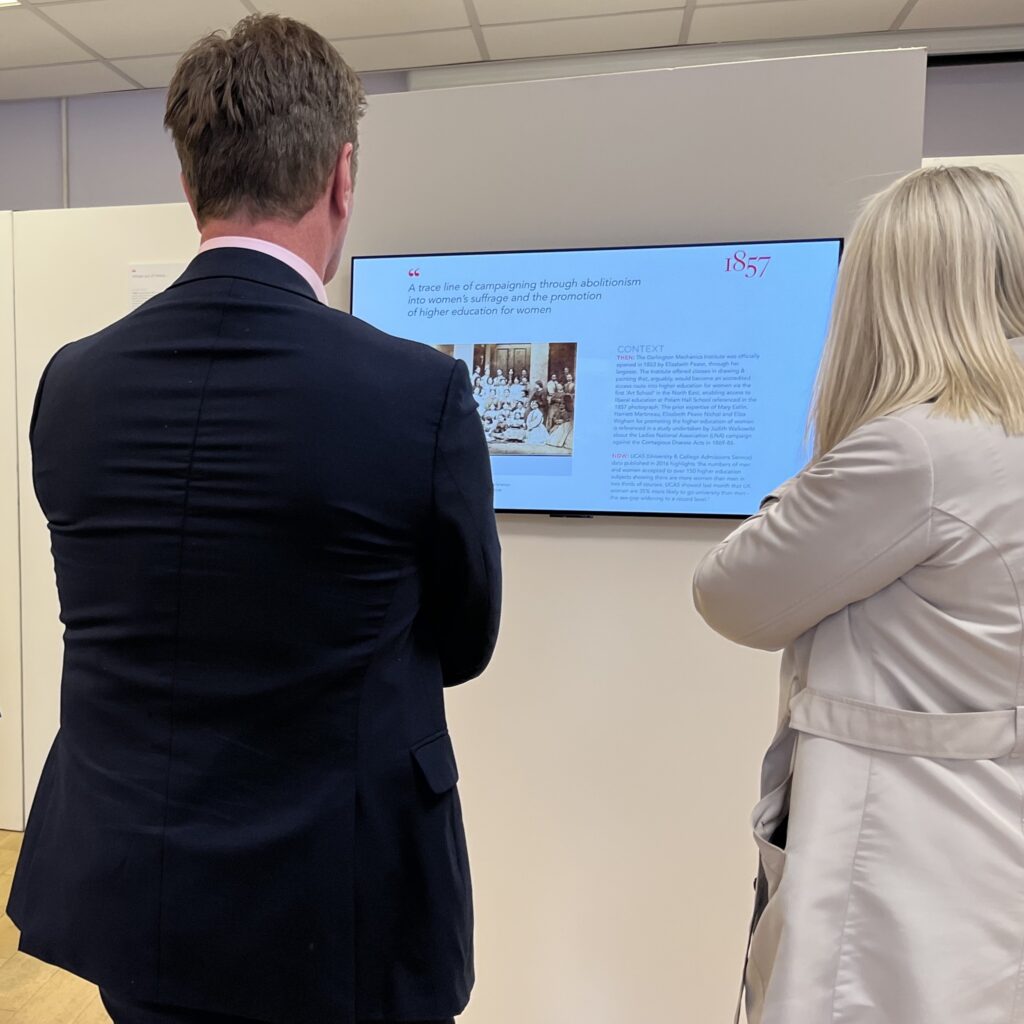
‘Indelicate, Ungenteel, Vulgar & Outrageous Women’ is a public exhibition. You can see paintings, portraits and photographs from the National Portrait Gallery (NPG) Primary Collection; film screenings of video work made by Tereza Stehlikova in Prague and get to know about 1960s rebel activist Marta Kubišová, a guest speaker at the primary school Tereza attended way back when.
The TV screen, by chance, shows what can be argued to be the first opportunity for women to attend an accredited art school education in the UK… in Darlington.
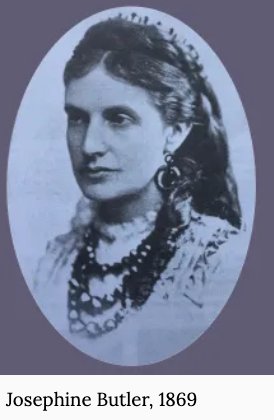
This exhibition is about remarkable people at a time when exhausting oppression legitimised the abuse of women through legal statutes. The Contagious Diseases Acts. It took 22 years to repeal these acts and the lead activist against this injustice was Josephine Butler. IUVOW protest is alive and well in the here and now.
‘After the 1869 Social Sciences congress at which the CD Acts were raised and condemned, a number of individuals established the National Association for the Repeal of the CD Acts. No women were originally included in the organisation though many later joined. The result of this omission was that by the end of December, the Ladies National Association for the Repeal of the Contagious Diseases Acts was formed. On New Year’s Day 1870, one of their first actions was to publish in the Daily News a protest against the Acts. This was signed by 124 women including Florence Nightingale, Josephine Butler, Mary Carpenter, Lydia Becker and drafted by Harriet Martineau and became known as the Ladies’ Protest.’
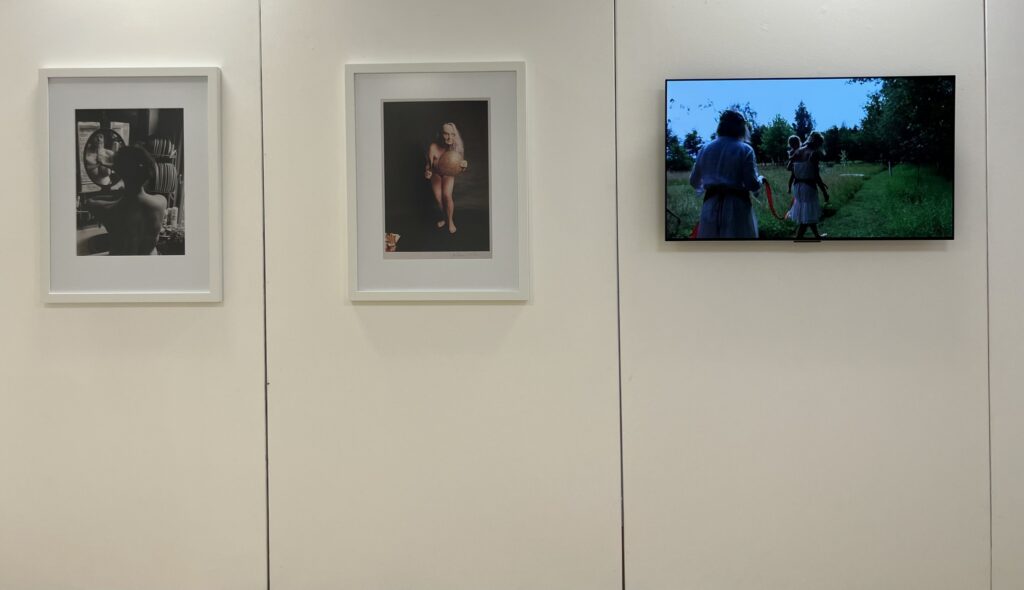
Shown to the right is a work from Tereza Stehlikova, the screen you can see here in situ is so wonderfully sharp and clear, visitor response to the connectivity of her family narrative is heartening to hear. The show has guests visiting whose family culture is variously situated. Iraq, India, Ukraine and across the UK. Such a pleasure to discuss the work of DOX in Prague City. The exhibition held recently at DOX: ‘The Pain of Others’, finished May 23rd really did cross the bridge. The visual alliance with Jo Spence as Warrior Woman is well made. Thank you.
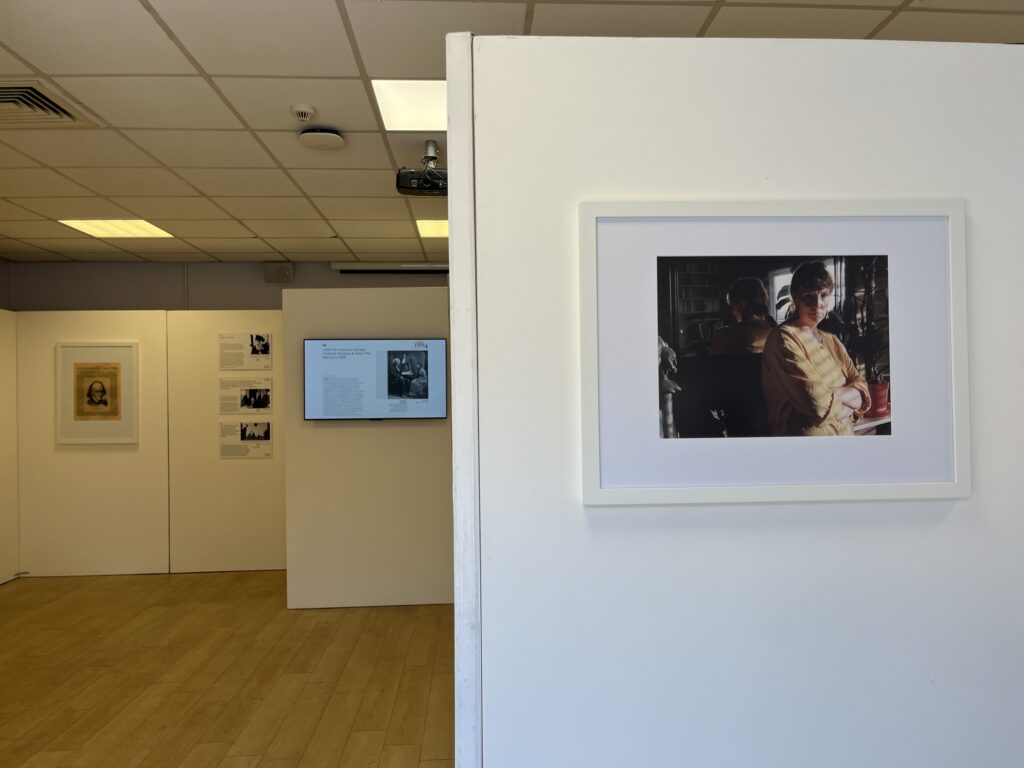
Many thanks to Ann McGuiness for taking this photograph of Jo Spence in 1989. A treasure. Heartening to know the National Portrait Gallery includes this compelling work in their Primary Collection. Well done to both, it matters.
The image above welcomes visitors and guests into the ‘Indelicate, Ungenteel, Vulgar and Outrageous Women’ exhibition space. Visitors are immediately in the frame, invested and can do no other than dare to enter.
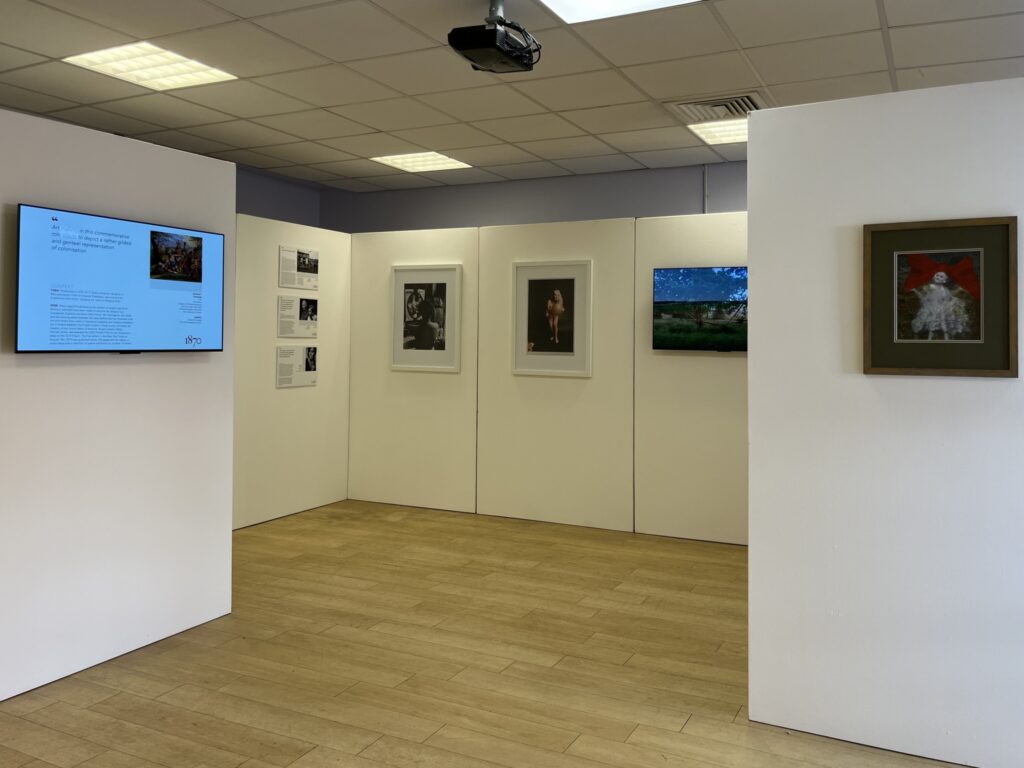
Pip Dickens you are a star. Your painting titled ‘Girl With a Red Bow’ (image right) is such a joy. Visitors and guests get it. It really crosses the bridge. Well done to you.
The image above shows the way the work is presented in situ, a chronology guiding viewers and guests to acknowledge the narrative of the show starts with a painting made in 1840 and ends with a painting made now, in this moment.
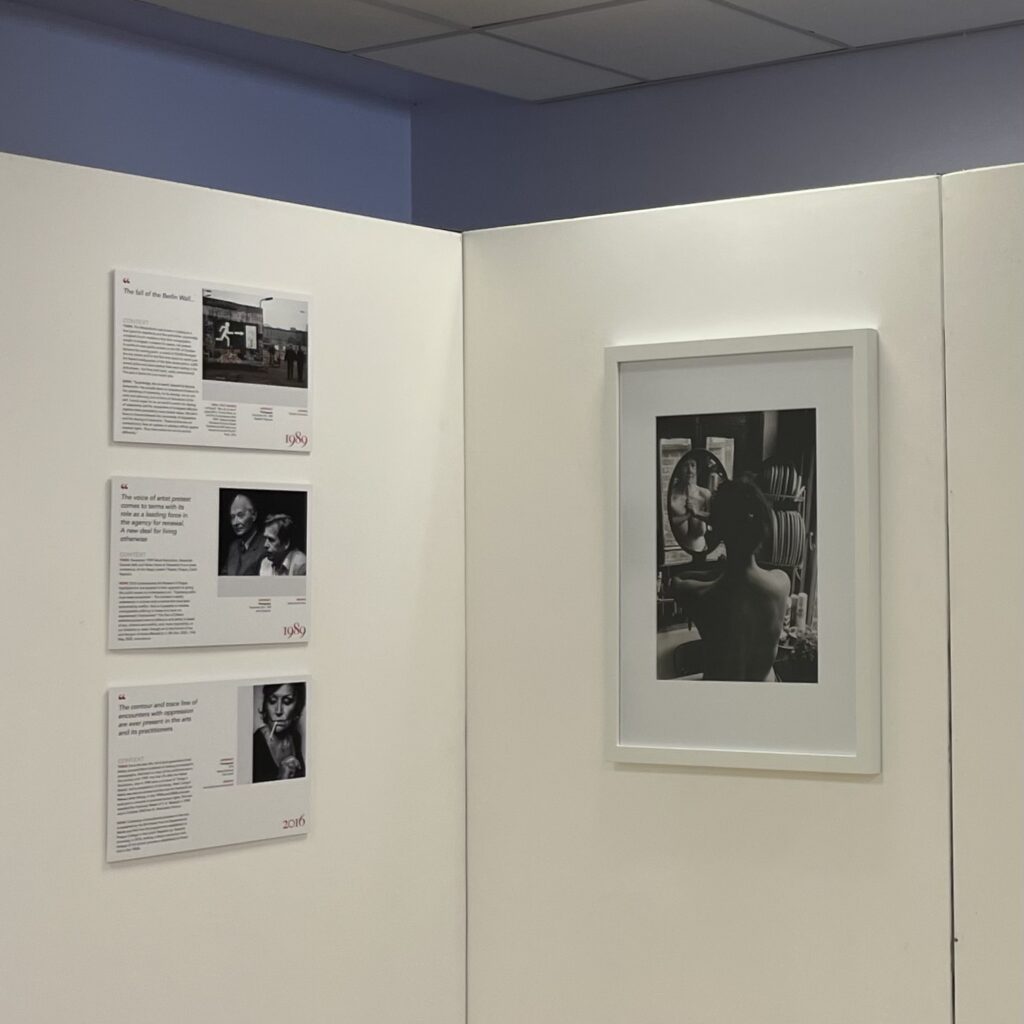
A refreshed look at 1989, decades ago, the fall of the Berlin Wall, the Velvet Revolution in Prague (Dubcek and Havel) including an especially welcome accolade for Marta Kubišová (image left) alongside a photograph of Jo Spence from the National Portrait Gallery, Primary Collection, taken by Maggie Murray (image right) – images of trust, each in their own way, quite remarkable and humbling.